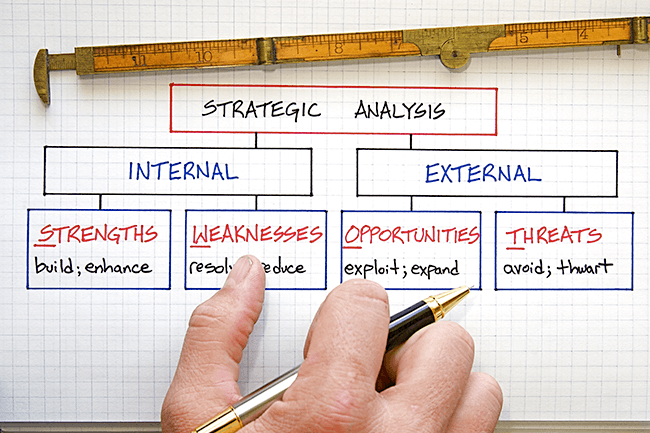Strategic Management with Balanced Scorecard Templates

Key Takeaways
- Evolution of Balanced Scorecard: Transitioned from simple performance metrics to a comprehensive strategic management tool.
- Balanced Scorecard Components: Encompasses financial, customer, internal process, and learning and growth perspectives for holistic performance measurement.
- Strategic Management Integration: Aligns business activities with organizational goals, enhancing communication and performance monitoring.
- Customization Across Industries: Adaptable to various sectors, with tailored metrics reflecting industry-specific challenges and objectives.
- Global Perspectives and Cultural Variations: The adoption and implementation of Balanced Scorecards vary globally, influenced by cultural and organizational nuances.
- Practical Implementation Guidelines: Involves assessment, design, deployment, and regular monitoring for effectiveness, with an emphasis on stakeholder engagement and training.
- Technological Advancements: AI and big data are revolutionizing Balanced Scorecards, making them more dynamic and insightful.
- Comparative Analysis with Other Tools: Offers a more comprehensive approach than traditional management methods and works synergistically with other business frameworks.
- Ethical and Cultural Considerations: Essential for maintaining transparency, accountability, and adaptability in diverse environments.
- Future Trends: Predicted to evolve further with technology, becoming more integrated and sophisticated in strategic management.
- Extensive Resources: Books, articles, online communities, and academic journals provide deeper insights and practical applications.
Introduction to Balanced Scorecard Templates in Strategic Management
The concept of the Balanced Scorecard has revolutionized the landscape of strategic management. By integrating this tool, businesses are able to align their day-to-day operations with long-term strategic goals. Let’s delve into its core elements and how it can be effectively implemented.
Evolution of the Balanced Scorecard Concept
The Balanced Scorecard, initially a simple performance measurement framework, has evolved into a full-fledged strategic planning and management system. It was developed by Drs. Robert Kaplan and David Norton in the early 1990s. Since then, it has transformed from tracking only financial outcomes to including non-financial aspects like customer satisfaction, internal business processes, and learning and growth. This evolution marked a significant shift in management thought, emphasizing a more holistic approach to organizational performance.
Fundamentals of Strategic Management Using Scorecards
Strategic management using scorecards involves the alignment of business activities to the vision and strategy of the organization, improving internal and external communications, and monitoring performance against strategic goals. The Balanced Scorecard serves as a pivotal tool in this process, linking performance metrics with strategic objectives. This aligns efforts across the organization, ensuring everyone is working towards a common goal. For more insights into strategic planning, consider exploring HuddleIQ’s guide to strategic planning templates.
Historical Development of the Balanced Scorecard
The Balanced Scorecard’s journey from a performance measurement tool to a comprehensive strategic management system is noteworthy. The initial focus was primarily on financial indicators, but it soon became apparent that modern organizations required a more balanced view. The integration of non-financial aspects like customer perspectives, business processes, and learning and growth initiatives has marked significant milestones in its development. Understanding its history helps in grasping the depth and breadth of its current applications.
Origins and Theorists Behind the Concept
Kaplan and Norton, the principal theorists behind the Balanced Scorecard, emphasized the importance of a balanced approach in organizational performance measurement. Their work highlighted the limitations of relying solely on financial indicators and proposed a more comprehensive framework that considers multiple perspectives. This revolutionary idea has since been the cornerstone of effective strategic management.
Evolution from Simple Metrics to Strategic Management Tools
The transition of the Balanced Scorecard from basic metrics to a strategic management tool demonstrates the dynamic nature of business management. Today, it encompasses various aspects of an organization’s operations, offering a more rounded and insightful approach to performance measurement and strategic planning.
Key Milestones in the Adoption of Balanced Scorecards
The widespread adoption of Balanced Scorecards across industries signifies its effectiveness. Key milestones include its initial adoption by large corporations, subsequent customization for different sectors, and its integration with technology, enhancing its accessibility and impact. This journey underscores the Scorecard’s adaptability and relevance in various business contexts.
Defining Key Terms in Balanced Scorecard Methodology
Understanding the terminology is crucial for effectively utilizing the Balanced Scorecard in strategic management. Here’s a breakdown of the key terms:
Understanding ‘Strategic Management’
Strategic Management refers to the formulation and implementation of major goals and initiatives taken by a company’s top management, based on consideration of resources and an assessment of the internal and external environments in which the organization competes. It involves setting clear objectives, analyzing competitive dynamics, and internal capabilities, evaluating strategies, and ensuring that management rolls out the strategies across the organization.
Clarifying ‘Balanced Scorecard’ in a Business Context
The ‘Balanced Scorecard’ is a strategy performance management tool. It’s used to monitor the execution of activities by the staff within their control and to monitor the consequences arising from these actions. The key components include financial measures, customer knowledge, internal business processes, and learning and growth. These elements help ensure a comprehensive approach to organizational performance measurement and management.
Other Relevant Business Strategy Terms
Terms like ‘Key Performance Indicators (KPIs)’, ‘Strategic Objectives’, ‘Performance Metrics’, and ‘Strategic Alignment’ are integral to understanding the Balanced Scorecard. KPIs are quantifiable measures that gauge performance relative to a strategic objective. Strategic objectives are the fundamental goals that drive the business, and performance metrics are the specific measures used to track the achievement of these objectives.
In-Depth Analysis of Balanced Scorecard Templates
Balanced Scorecard templates are essential tools for organizations aiming to implement this strategic framework effectively. These templates not only serve as a starting point but also guide the customization and adaptation process to suit specific organizational needs and industry requirements.
Components and Structure of Effective Scorecards
An effective Balanced Scorecard is comprised of several key components that together provide a comprehensive view of an organization’s performance:
- Financial Metrics: This component focuses on the financial objectives of the organization and includes measures related to profitability, revenue growth, cost management, and return on investment. Financial metrics are crucial as they give a clear picture of the organization’s financial health and sustainability.
- Customer Perspective: This aspect concentrates on customer satisfaction and retention. Metrics may include customer satisfaction scores, market share, customer loyalty indices, and customer acquisition rates. Understanding the customer perspective helps organizations align their strategies to meet market demands and enhance customer relationships.
- Internal Process Perspective: This component deals with the internal operational processes critical to achieving customer satisfaction and financial goals. Metrics here might encompass process efficiency, quality measures, throughput times, and innovation capabilities. It helps in identifying areas where process improvements are needed.
- Learning and Growth Perspective: This perspective focuses on the organization’s ability to innovate, improve, and learn. It includes metrics related to employee satisfaction and retention, skills development, organizational culture, and knowledge management. This perspective is vital for long-term sustainability and growth.
A well-structured Balanced Scorecard clearly delineates these perspectives, ensuring a balanced approach to performance measurement. It should include specific goals, measures, targets, and initiatives aligned with each perspective, providing a clear roadmap for achieving strategic objectives.
Customization and Adaptation for Various Industries
The versatility of the Balanced Scorecard is highlighted in its adaptability to different industries. Each industry has its unique challenges and goals, necessitating a tailored approach to the Scorecard’s implementation.
- Manufacturing Industry: In manufacturing, the Scorecard might emphasize operational efficiency, quality control, and innovation in production processes.
- Healthcare Sector: For healthcare, patient satisfaction, clinical outcomes, and operational efficiency in patient care are likely to be key focus areas.
- Education Sector: In education, the emphasis might be on student outcomes, teaching quality, and institutional growth.
- Retail Industry: Retail businesses might focus on customer experience, supply chain efficiency, and sales performance.
Customization involves identifying industry-specific performance indicators and aligning them with broader organizational goals. This process ensures that the Balanced Scorecard is relevant, actionable, and effective in driving the strategic objectives of the organization within its specific industry context.
Conclusion
In-depth analysis of Balanced Scorecard templates reveals their significance as both a strategic guide and a customizable framework. By effectively leveraging these templates, organizations can ensure a well-rounded approach to performance measurement and strategic management, tailored to their unique industry requirements and goals. This adaptability and comprehensiveness are what make the Balanced Scorecard an enduring and valuable tool in the realm of strategic management.
Case Studies: Implementing Balanced Scorecards
Analyzing real-world applications provides valuable insights into the practicality of Balanced Scorecards.
Success Stories in Different Sectors
Numerous organizations across various sectors, including healthcare, education, finance, and manufacturing, have successfully implemented Balanced Scorecards. These success stories highlight the flexibility and effectiveness of the Scorecard in driving strategic goals and improving overall performance.
Lessons Learned from Failed Implementations
Not all implementations are successful. Analyzing failed attempts at adopting Balanced Scorecards can provide critical lessons, such as the importance of leadership commitment, clear communication, and the need for alignment between the Scorecard and the organization’s culture and strategy.
Comparative Analysis of Before and After Scorecard Adoption
Comparing organizational performance before and after the adoption of Balanced Scorecards can demonstrate their impact. This analysis often reveals improvements in strategic alignment, operational efficiency, and overall organizational performance.
Critical Analysis of Balanced Scorecard Effectiveness
Evaluating the effectiveness of Balanced Scorecards is essential to understanding their value in strategic management.
Measuring Performance and Strategic Alignment
The effectiveness of a Balanced Scorecard is measured by its ability to improve performance and align organizational activities with strategic goals. This involves evaluating whether the Scorecard has led to better decision-making, improved financial performance, and enhanced operational efficiency.
Evaluating Long-term Impact on Organizational Goals
Long-term evaluations consider the sustained impact of the Balanced Scorecard on achieving organizational goals. This includes assessing changes in organizational culture, employee engagement, and sustained improvements in performance metrics.
Diverse Perspectives on the Use of Balanced Scorecards
The Balanced Scorecard, like any strategic tool, has its proponents and critics. Understanding these varying perspectives is key to a balanced view of its effectiveness.
Supporters vs. Critics: A Balanced Discussion
Supporters of the Balanced Scorecard argue that it provides a comprehensive framework that balances financial and non-financial performance measures, leading to improved decision-making and strategic alignment. Critics, however, point out potential drawbacks, such as the risk of information overload, the complexity of implementation, and the potential to focus too narrowly on the metrics rather than the underlying strategic goals.
Global Adoption and Cultural Variations in Implementation
The Balanced Scorecard’s adoption varies globally, influenced by cultural and organizational differences. In some regions, its comprehensive nature aligns well with collaborative and holistic business cultures. In others, challenges arise due to different management styles and organizational structures. This variation highlights the need for cultural adaptation when implementing the Balanced Scorecard.
Practical Guidelines for Implementing Balanced Scorecards
Effective implementation of Balanced Scorecards is crucial for their success. Here are some guidelines:
Step-by-Step Implementation Process
- Assessment: Evaluate your organization’s readiness and define clear objectives for the Balanced Scorecard.
- Design: Develop the Scorecard, ensuring alignment with strategic goals and inclusion of relevant metrics across all four perspectives.
- Deployment: Communicate the purpose and benefits to all stakeholders and provide necessary training.
- Monitoring and Revision: Regularly review and adjust the Scorecard to ensure it remains relevant and effective.
Common Challenges and Solutions
Challenges such as resistance to change, difficulty in selecting appropriate metrics, and integration with existing systems are common. Solutions include stakeholder engagement, pilot testing, and phased implementation. HuddleIQ’s resources on brainstorming can provide further insights into overcoming these challenges.
Integrating Scorecards into Corporate Culture
For a Balanced Scorecard to be effective, it must be integrated into the corporate culture. This integration involves aligning the Scorecard with organizational values, ensuring leadership endorsement, and embedding it into routine management processes.
Future Trends in Balanced Scorecard Usage
The future of Balanced Scorecards looks promising, with technological advancements shaping their evolution.
Technological Advancements and Their Impact
Technologies like AI, machine learning, and big data analytics are enhancing the capabilities of Balanced Scorecards, making them more dynamic and insightful. These technologies enable real-time data analysis and predictive analytics, offering deeper insights into organizational performance.
Predictions for Strategic Management Tools
The role of Balanced Scorecards in strategic management is expected to grow, with predictions suggesting increased integration with digital tools for more sophisticated and agile strategic planning.
The Role of AI and Big Data in Scorecard Evolution
AI and big data are set to revolutionize the way Balanced Scorecards are used. These technologies can automate data collection and analysis, provide predictive insights, and enable more personalized and adaptive strategic management approaches.
Expert Insights: Interviews and Opinions on Balanced Scorecards
The Balanced Scorecard, a critical tool in strategic management, has garnered diverse perspectives from industry experts, academics, and practitioners. Their insights provide a deeper understanding of the Scorecard’s evolving nature, effectiveness, and application in various industrial contexts.
Thought Leaders in Strategic Management
Interviews with thought leaders in strategic management shed light on how the Balanced Scorecard continues to evolve. These experts, often pioneers in strategic planning and performance measurement, have observed firsthand the adaptation of the Scorecard to meet the changing needs of modern businesses. They highlight its growing significance not just as a measurement tool, but as a strategic framework that facilitates decision-making and long-term planning. These thought leaders underscore the Scorecard’s role in integrating and aligning various aspects of business operations, from finance to customer relations, internal processes, and workforce development.
Academic Perspectives on Scorecard Effectiveness
Academic research into the Balanced Scorecard offers critical evaluations of its effectiveness and areas for improvement. Studies in this field examine how the Scorecard impacts organizational performance, with findings often based on empirical data and rigorous analysis. Researchers analyze its application in diverse organizational settings, scrutinizing how it influences strategic alignment, operational efficiency, and overall corporate success. These academic perspectives are invaluable for refining the Balanced Scorecard framework, offering suggestions on how it can be more effectively implemented and adapted to various business environments.
Industry Case Studies and Expert Analysis
Case studies from a range of industries provide practical insights into the implementation and outcomes of Balanced Scorecards. These real-world examples showcase how different organizations have tailored the Scorecard to their unique needs and strategic objectives. Expert analysis of these case studies highlights best practices in Scorecard implementation, including the importance of leadership commitment, clear communication, and alignment with organizational culture. Additionally, these analyses reveal common pitfalls, such as the overemphasis on certain metrics or the failure to adequately integrate the Scorecard into existing business processes.
Comparing Balanced Scorecards with Other Strategic Tools
Understanding how Balanced Scorecards stack up against other strategic management tools offers valuable insights into their unique advantages and potential limitations.
Scorecards vs. Traditional Management Methods
Compared to traditional management methods, which often focus heavily on financial metrics, Balanced Scorecards provide a more holistic view by incorporating non-financial aspects such as customer satisfaction, internal processes, and employee development. This broader perspective helps organizations achieve long-term sustainable growth.
Synergies with Other Business Frameworks
The Balanced Scorecard complements other business frameworks like SWOT analysis, PESTEL analysis, and Porter’s Five Forces. It works synergistically with these tools, providing a comprehensive approach to strategic planning and performance measurement. For instance, the insights gained from a SWOT analysis can feed into the development of a Balanced Scorecard, ensuring a well-rounded strategic plan.
Advantages and Limitations of Balanced Scorecards
A critical examination of the benefits and drawbacks of Balanced Scorecards is essential for a nuanced understanding.
Benefits in Organizational Alignment and Performance
The key advantages of Balanced Scorecards include improved strategic alignment, enhanced performance measurement, and better communication of strategy across the organization. By linking short-term actions with long-term goals, they ensure that all departments and employees are working towards common objectives.
Recognizing and Addressing Limitations and Misuses
Despite their benefits, Balanced Scorecards have limitations. These include the risk of becoming too complex, potential misalignment with rapidly changing business environments, and the challenge of maintaining relevance over time. It’s crucial to regularly review and update the Scorecards to ensure they remain aligned with the organization’s evolving strategic goals.
Debunking Myths About Balanced Scorecards
Balanced Scorecards, a strategic tool in the realm of business management, have been surrounded by various myths and misconceptions. Addressing these myths is crucial to understand the true value and versatility of Balanced Scorecards.
Myth 1: Suitable Only for Large Corporations
One of the most common misconceptions is that Balanced Scorecards are exclusively beneficial for large corporations. This myth stems from the notion that only big organizations have the complexity and resources to implement such a comprehensive tool. However, this is far from the truth. Balanced Scorecards are highly adaptable and can be scaled to fit the needs of businesses of all sizes, including small and medium-sized enterprises (SMEs). For smaller businesses, the Balanced Scorecard can be simplified and tailored to focus on the most critical aspects of their strategy and performance. This adaptability makes it an effective tool for guiding strategy and monitoring performance, regardless of the organization’s size.
Myth 2: Sole Focus on Financial Metrics
Another widespread myth is that Balanced Scorecards are predominantly focused on financial metrics. Originally, business performance tools heavily emphasized financial indicators, leading to the misconception that Balanced Scorecards follow the same pattern. However, the Balanced Scorecard is designed to provide a more holistic view of organizational performance. It includes four key perspectives: financial, customer, internal business processes, and learning and growth. This multi-faceted approach ensures that organizations do not focus solely on financial results at the expense of other critical areas such as customer satisfaction, internal efficiency, and employee development. By balancing these perspectives, the Balanced Scorecard helps organizations achieve sustainable success, not just short-term financial gains.
Myth 3: Complexity and Inflexibility
Some believe that Balanced Scorecards are too complex and inflexible, suited only to static business environments. In reality, the Balanced Scorecard is a flexible tool that can be adjusted as organizational strategies and environments evolve. Its structure encourages regular review and adaptation, allowing businesses to respond to changes in the market, technological advancements, and shifting customer needs. This dynamism is critical in today’s fast-paced business world, where agility and responsiveness are key to maintaining a competitive edge.
Myth 4: Lack of Employee Involvement
There’s a misconception that the Balanced Scorecard is a top-down approach, excluding employee involvement. Contrary to this belief, effective implementation of Balanced Scorecards often involves significant employee engagement. Employees are encouraged to contribute to setting objectives, identifying key performance indicators, and developing initiatives to achieve strategic goals. This inclusive approach not only improves the relevance and effectiveness of the Scorecard but also boosts employee morale and commitment to organizational objectives.
Conclusion
Dispelling these myths about Balanced Scorecards is essential for organizations to appreciate their full potential as a strategic management tool. By understanding its scalability, comprehensive approach, flexibility, and ability to engage employees, businesses of all sizes and types can effectively leverage Balanced Scorecards to navigate their strategic journey and achieve long-term success.
FAQs on Implementing and Using Balanced Scorecards
Implementing and using Balanced Scorecards effectively can raise several questions for organizations. Addressing these frequently asked questions (FAQs) can help clarify common concerns and offer practical advice for a successful implementation.
1. How Long Does It Take to Implement a Balanced Scorecard?
The time required to implement a Balanced Scorecard varies depending on the size and complexity of the organization. Typically, it can take anywhere from a few months to a year. The key phases include initial planning, development of the Scorecard, training, and rollout. Smaller organizations may move through these phases more quickly, while larger ones may require more time for comprehensive integration.
2. What Resources Are Needed for Implementing a Balanced Scorecard?
Implementing a Balanced Scorecard requires both human and financial resources. Key human resources include a project team, typically comprising members from different departments for a holistic approach. Financial resources are needed for training, software tools (if used), and potentially consulting services. Additionally, time and commitment from top management are crucial for successful implementation.
3. How Do We Select Appropriate Metrics for the Balanced Scorecard?
Selecting appropriate metrics involves aligning them with your organization’s strategic objectives. Metrics should be balanced across the four perspectives (financial, customer, internal processes, and learning and growth). They should be relevant, measurable, and actionable. It’s also important to ensure they are not too numerous to manage effectively and that they provide a comprehensive view of organizational performance.
4. Can the Balanced Scorecard Be Integrated into Existing Business Processes?
Yes, the Balanced Scorecard should be integrated into existing business processes for maximum effectiveness. This integration involves aligning the Scorecard’s objectives and metrics with those of various business units and processes. It may also require modifying some processes to better support the strategic objectives outlined in the Scorecard.
5. How Often Should the Balanced Scorecard Be Reviewed and Updated?
The Balanced Scorecard should be reviewed and updated regularly to ensure it remains relevant and aligned with the organization’s strategic goals. This could be on a quarterly, semi-annual, or annual basis, depending on the organization’s needs and the dynamic nature of its business environment.
6. Is Training Necessary for Implementing a Balanced Scorecard?
Yes, training is an essential part of implementing a Balanced Scorecard. All levels of employees, from executives to departmental staff, should understand the Scorecard’s objectives, how it works, and their role in its success. Training ensures that everyone is aligned and capable of effectively contributing to the Scorecard’s objectives.
7. How Do We Measure the Success of a Balanced Scorecard?
The success of a Balanced Scorecard can be measured by its impact on organizational performance and strategic alignment. Key indicators include improved financial performance, increased customer satisfaction, enhanced internal processes, and growth in employee capabilities. It’s also important to assess the level of engagement and understanding across the organization regarding the Scorecard’s objectives.
Actionable Steps for Creating Effective Balanced Scorecards
Creating an effective Balanced Scorecard involves several key steps:
Designing the Template: Key Considerations
When designing a Balanced Scorecard template, consider your organization’s unique strategic objectives, the industry context, and the need for balance between different perspectives. The template should be simple yet comprehensive, allowing for easy interpretation and application.
Implementing the Scorecard: Best Practices
Best practices for implementing a Balanced Scorecard include securing leadership commitment, ensuring clear communication of the Scorecard’s purpose and benefits, and providing training to staff. Involving employees in the development process can also enhance buy-in and relevance.
Monitoring and Adjusting: Ensuring Continued Relevance
Regularly monitor the performance indicators on the Scorecard and adjust them as necessary. This ensures the Scorecard remains relevant and aligned with the organization’s changing needs and strategic direction.
Ethical and Cultural Considerations in Balanced Scorecard Usage
Ensuring Ethical Transparency and Accountability
Ethical considerations in Balanced Scorecard usage include maintaining transparency in performance measurement and ensuring that the Scorecard does not promote unethical behavior to meet targets.
Cultural Adaptability of Scorecards
Considering cultural factors is crucial when implementing Balanced Scorecards in different geographic locations or in organizations with diverse workforces. Adaptation to local cultural norms and values can enhance the effectiveness and acceptance of the Scorecard.
Global Perspectives on Strategic Measurement
Global perspectives provide insights into how Balanced Scorecards are used and perceived in different parts of the world, highlighting the need for contextual understanding in their implementation.
Personal Stories and Anecdotes in Scorecard Implementation
The implementation of Balanced Scorecards in organizations can be enriched with personal stories and anecdotes from leaders and managers who have navigated this journey. Their experiences offer real-world insights and practical lessons, serving as valuable guidance for others considering or undertaking a similar path.
Story 1: Overcoming Initial Resistance
A CEO of a mid-sized tech company shared how they faced initial resistance from their team during the Scorecard implementation. Skepticism was high, especially around the perceived administrative burden. However, by involving team leaders in the development process and demonstrating the Scorecard’s alignment with individual and team goals, the CEO was able to turn reluctance into enthusiasm. The key lesson here was the importance of inclusivity and clear communication in fostering organizational buy-in.
Story 2: Aligning Diverse Departments
The head of operations at a healthcare organization recounted the challenge of aligning various departments with differing priorities under one Balanced Scorecard. Through a series of collaborative workshops, they established common ground and unified objectives. This experience highlighted the importance of understanding and respecting diverse departmental goals while steering them towards a shared strategic vision.
Story 3: Adapting the Scorecard in Dynamic Environments
A marketing director from a fast-growing startup shared their story of adapting the Scorecard as the company rapidly evolved. The initial metrics and goals quickly became outdated as the business landscape changed. The key takeaway was the necessity of flexibility and regular updates to the Scorecard to keep it relevant and effective.
Story 4: Integrating Scorecard into Company Culture
A non-profit leader described how they embedded the Balanced Scorecard into their organizational culture. By tying the Scorecard to staff performance reviews and celebrating achievements linked to Scorecard objectives, they made it a living part of their daily operations. This story illustrates the power of integrating strategic tools into the fabric of the organization.
Story 5: Learning from Failure
An entrepreneur shared a candid account of a failed Balanced Scorecard implementation. They attributed the failure to a lack of clarity and overcomplication of metrics. This experience served as a cautionary tale about the need for simplicity, clarity, and a strong alignment with strategic objectives.
These personal stories and anecdotes provide a rich tapestry of experiences, emphasizing various aspects such as the need for flexibility, clear communication, inclusivity, and alignment with organizational culture. They underscore that while Balanced Scorecards are a powerful tool, their success largely depends on the way they are implemented and embraced within the organization.
Statistical Analysis of Balanced Scorecard Adoption and Success
The adoption and success of Balanced Scorecards in organizations have been the subject of various statistical analyses, providing empirical evidence of their effectiveness and highlighting areas for improvement. These studies offer quantitative insights into how widely Balanced Scorecards are used and their impact on organizational performance.
Adoption Rates Across Industries
Statistical data indicate that the adoption of Balanced Scorecards varies significantly across different industries. For instance, sectors like finance, healthcare, and technology have shown higher adoption rates, largely due to their need for robust performance measurement and strategic management systems. In contrast, smaller adoption rates are observed in less dynamic industries or those with less emphasis on strategic diversification.
Correlation with Organizational Performance
Several studies have analyzed the correlation between the implementation of Balanced Scorecards and improved organizational performance. Key findings include:
- Organizations with fully implemented Balanced Scorecards reported an average increase in financial performance by a significant margin compared to those without.
- Companies using Balanced Scorecards were more likely to report improved employee engagement and customer satisfaction.
- Businesses that aligned their Balanced Scorecards with their strategic goals effectively saw a marked improvement in operational efficiency.
Impact on Strategic Alignment
Statistical analysis has also shed light on the Balanced Scorecard’s role in enhancing strategic alignment within organizations. A high percentage of companies reported improved alignment of objectives across different departments after implementing Balanced Scorecards. This alignment was correlated with more effective strategic execution and better overall organizational performance.
Areas for Improvement
Despite the positive impact, these analyses also point out areas for improvement in Balanced Scorecard implementations. Common issues include:
- A disconnect between the Scorecard metrics and day-to-day operational activities.
- The need for more regular updates to the Scorecard to reflect changing business environments.
- Challenges in maintaining employee engagement with the Scorecard over time.
Long-Term Success and Sustainability
Longitudinal studies indicate that organizations maintaining their Balanced Scorecard systems over extended periods tend to show sustained improvements in performance. These businesses often adapt and evolve their Scorecards in response to internal and external changes, suggesting that the tool’s flexibility is key to its long-term effectiveness and sustainability.
Conclusion
The statistical analysis of Balanced Scorecard adoption and success underscores its value as a strategic management tool, highlighting its widespread use and positive impact on various aspects of organizational performance. However, these studies also emphasize the need for continuous adaptation and alignment with the organization’s strategic goals to fully realize the benefits of Balanced Scorecards. For organizations looking to implement or refine their Balanced Scorecard approach, these insights can be invaluable in guiding their strategies for successful outcomes.
Conclusion: The Future Role of Balanced Scorecards in Strategic Management
In conclusion, Balanced Scorecards continue to play a pivotal role in strategic management. With ongoing developments in technology and strategic thinking, they are likely to evolve further, offering more sophisticated and integrated solutions for organizational performance management.














